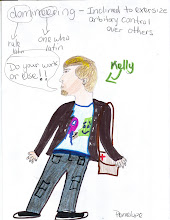It seemed like, if I were going to go on about new experiences, it might be wise to go over something old, something complimentary. In this case, we might as well just follow creators from Lost on to Fringe.
On the surface, Fringe a very different beast from Lost—the cast is significantly smaller, it’s much more episodic, not as mysterious, more directly sci-fi, and aggressively weird. Still, it’s strongly character driven, plays around the edges of science, unfolds mysteries gradually, plays mind-bending tricks on viewers, and features what is building to be a series-long plotline. Like Lost, it’s got a strong visual sense, particularly pertaining to outmoded technology. Fringe has been called transistor-punk by some, and it’s an ethos you can see on Lost as well. Sadly, Fringe isn’t as popular as Lost. Not quite as accessible, it doesn’t have the survival adventure grounding, and spends more time with frozen heads reattaching to bodies. Of course, I love frozen heads. Lost’s low-key approach had to convince me, but as soon as Fringe hopped up its heroine on LSD and dunked her into a sensory-deprivation tank so she could meld minds with her boyfriend who was rapidly turning to crystal, I knew I’d at least be in for a wild ride.


No comments:
Post a Comment